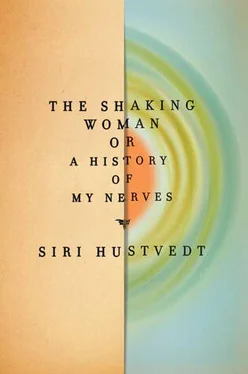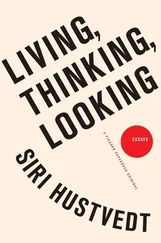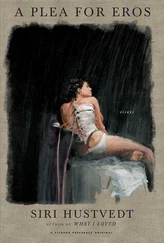But Weil’s passage about headache is typically perspicacious. She dissolves the border between outside and inside. Her injury is internal and external, her pain fierce, and yet some portion of her suspends it and grips what is not hurt but whole. I know from experience that it is possible to work even with severe headaches, to feel pain but to learn not to pay attention to it in a way that will only exacerbate the misery. Focus and worry make headaches worse. Distraction and meditation make them better.
In Pain: The Science of Suffering, the neuroscientist Patrick Wall argues that pain is not measurable by the usual methods of science. In study after study, he writes, researchers have gathered a group of “subjects,” administered a painful stimulus to each one, and then monitored and compared their volunteers’ physiological responses. This is how science proceeds, but Wall maintains that the artificial context of these experiments distorts the realities of pain. The subjects know the scientists aren’t going to cast them into a state of prolonged agony, and if they hurt too much, they can yell, Stop! Wall refers to this laboratory environment as pain without suffering: “the measure ment of pain in these circumstances has been carried out in thousands of trials. Inherent in these trials is the concept of a pure sensation of pain liberated from perceptions and meanings. Many believe such a sensation exists. I do not.” 173Wall points out that despite experiments conducted in exactly the same way with identical verbal instructions, the upper threshold of tolerable pain changes from culture to culture. Results also depend on who is giving the instructions — a man or a woman, a professor, a technician, or a student.
None of these findings startles me. If one knows pain will end (this is a twenty-four-hour stomach flu and I will soon be better), it is more bearable than a mild ache you have been told is killing you. My roots are in Scandinavia, where stoicism is highly valued. Swimming in ice water is viewed as admirable, but in another culture it might be regarded as foolish or downright insane, and a given person’s response to that dip in the frigid deep will not just appear to be different, according to its meaning for him, it will be different, and not just psychologically but neurobiologically. You can’t parse the two. Most people are more impressed by professors than by students and will be more inclined to parade their toughness when face-to-face with Herr Doktor himself, as opposed to an underling reading from a script. I suspect man-on-man encounters often involve testosterone-fueled competition, something women are less likely to engage in. And pain is always emotional. Fear and depression keep constant company with chronic hurting. It will never go away; I will always be in pain; I feel so sad are the mantras of those who wake, slog through the day, and retire every night with everlasting pain of one kind or another. When I had my two bouts of status migrainosis, each one of which lasted about a year, I continually checked my pain: Was it lighter? A bit . Hope waved a victorious flag inside me. Soon it will disappear and go away forever! Was it worse? Yes, it was definitely worse . I lowered the flag and returned to battle. Hour after hour, day after day, month after month, I tracked the ups and downs of my wretched head. After I had seen Dr. E. and learned to meditate with his machine (there is essentially no difference between biofeedback and various forms of Eastern meditation), I retired from the headache vigilance squad. I stopped paying so much attention to my pain. It is there often, and every once in a while it becomes violent and I must stop working and lie down, but I neither despair nor believe it will vanish forever. My pain is qualitatively different from what it was when I was younger. I suffer less because my perception of the pain I feel and the meaning I attach to it have changed.
Patrick Wall died of cancer in 2001. In his book, published the previous year, he does not widen his thoughts to include scientific research on other aspects of human life, but he could easily have done so. Essentially, Wall is saying: pain cannot be separated from our perception of pain, and those perceptions have meanings. Such perceptions involve an individual’s nervous system inside a particular body in relation to a particular environment — to culture, language, and other people (present and absent). Pain happens within the lived body of a subject, not inside the hypothetical, objective, inert body of Gray’s Anatomy . Is there a “pure sensation” of anything that can be attributed to neural networks rather than to a sentient, thinking, embodied human being living in a world? And that problem doesn’t even touch on the befuddling dilemma of the word itself, pain, used here by the researchers to mean what happens after a “subject” gets an electric shock, a pinprick, or a slap. How do I know what pain means except for what it means to me? For years, I have been puzzling over Wittgenstein’s meditations on language and pain in his Philosophical Investigations: “[Pain] is not a something, ” he announces, “but not a nothing either! The conclusion was only that a nothing would serve just as well as a something about which nothing could be said.” The philosopher goes on to recommend “a radical break with the idea that language always functions in one way, always serves the same purpose: to convey thoughts — which may be about houses, pains, good and evil, or anything else you please.” 174The slippery character of language is in its use, which changes from speaker to speaker. Scientists forget this with stunning regularity.
I have always found it comic when a doctor asks me to rate my pain on a scale of 1 to 10. Here numbers take the place of words. Rate my pain in relation to what? The worst pain I’ve ever had? Do I remember the worst pain? I can’t retrieve it as pain, only as an articulated memory or an empathetic relation to my past self: childbirth hurt, migraines hurt, the pain in my cracked elbow hurt. Which one was a 6, a 7? Is your 4 my 5? Is Charlie’s 9 Daya’s 2? Does a 10 actually exist, or is it a sort of ideal representation of the unbearable? Do you expire after a 10? The notion that degrees of pain can be charted by numbers is ludicrous but routine. The attempt to avoid ambiguity only increases it.
The change in my own pain is psychobiological. My thoughts have been crucial to reducing my pain. As the authors of the paper on placebo effects I cited earlier acknowledged, “cognitive factors” affect neurochemistry. What we have always thought of as mental can influence what we have always thought of as physical. No one can explain how these complex mechanisms work, but activity in the prefrontal, executive portion of the brain does appear to regulate and inhibit many cerebral functions. People with obsessive-compulsive disorder can reduce their intense needs to wash, check, count, or touch with simple cognitive behavioral techniques — resisting the impulse over greater and greater periods of time. The talking cure has been shown to be as effective as drugs for people with mild or moderate depression, although often both are used as treatment. 175
Human beings are repetitive animals. All meaning is generated through repetition. When I come upon a word I don’t know, I have to look it up and hope that the next time around I will remember what pruriginous means. As soon as it is repeated, the novel ceases to be novel. Shaking once is different from shaking twice. In psychiatric and neurological illnesses, repetition often appears to be compulsive, an unstoppable urge to return to the same thing, something Freud noticed in his own patients and wrote about. In the hospital when I am teaching, it is evident that many patients in my classes have fallen into neuropsychological ruts — the inability to lift themselves out of a pattern of relentless morbid repetition. Depressed people generate one gloomy thought after another, for example, but there are times when, if urged to refocus their energies in a writing assignment, they find themselves, at least for the moment, jogged out of their trenches of misery. “I remember my mother’s chicken gravy and how good it was.”
Читать дальше












